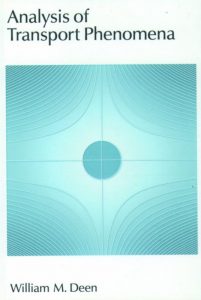
renal vein flow rate = renal artery flow rate – excretion rate = 1.19 L min-1 Renal vein flow rate = 1.32 L min-1 – (1.5 L day -1) / (1440 min day-1) = 1.319 L min-1 (c). Then the fraction of water filtered across the glomerulus is 8.6% for men and 7.9% for women. Then the water flow rate through kidney is 2091 L day-1 for men and 2281 L day-1 for women (Two kidneys). The water content is 55% and 60% of the whole blood for men and women, respectively. Therefore, diffusion is much faster than reaction and does not delay the oxygenation process. While larger than the difference for CO2, the pressure difference driving transport is much larger for O2 than CO2. Thus, the O2 concentration difference of 0.0025 M corresponds to 5.58 cm3 O2 per 100 cm3. At standard temperature (273.15 K) and pressure (1 atm = 101,325 Pa), 1 mole of gas occupies 22,400 cm3. Using data in problem (1.2), the total O2 concentration in blood is 0.0088 M in arterial blood and 0.0063 M in venous blood. For O2, PO2 changes from 38 to 100 mmHg after blood passes through lung artery. For CO2 70% is stored in plasma and 30% is in red blood cell. Most oxygen in blood is bound to hemoglobin.ġ.3. Corresponding values for women are 1.7% and 98.3% in arterial blood, and 0.93% and 99.07% in venous blood. Based on these data, the fraction of oxygen in plasma and bound to hemoglobin is 1.5% and 98.5% in arterial blood, and 0.83% and 99.17% in venous blood for men. PO2 and S are 95 mmHg and 95% for arterial blood and 38 mmHg 70% for venous blood. Since HO2 = HHb, equation (1.6.4) is simplified to the following: CO2 = H O2 PO2 + 4C Hb SHct Therefore, convection is negligible compared with diffusion. (b) The distance between capillaries is 10-4 m oxygen needs to travel half of this distance, which yields a value of PE equal to 0.0455. Assume that convection is the same as diffusion, i.e., Pe = 1, L is 0.123 cm. The relative importance of convection and diffusion is evaluated by Peclet number, vL (S1.1.1) Pe = Dij (a) Solving for L, L = PeDij/v. Solution to Problems in Chapter 1, Section 1.10 1.1. To obtain permission(s) to use material from this work, please submit a written request to Pearson Education, Inc., Permissions Department, 1 Lake Street, Upper Saddle River, NJ 07458. This publication is protected by Copyright and permissions should be obtained from the publisher prior to any prohibited reproduction, storage in a retrieval system, or transmission in any form or by any means, electronic, mechanical, photocopying, recording, or likewise. Manufactured in the United States of America. _ Copyright © 2010 Pearson Education, Inc., publishing as Prentice Hall, Upper Saddle River, New Jersey 07458.


All recipients of this work are expected to abide by these restrictions and to honor the intended pedagogical purposes and the needs of other instructors who rely on these materials. The work and materials from it should never be made available to students except by instructors using the accompanying text in their classes. Dissemination or sale of any part of this work (including on the World Wide Web) will destroy the integrity of the work and is not permitted. This work is protected by United States copyright laws and is provided solely for the use of instructors in teaching their courses and assessing student learning.

#Transport phenomena solutions manual
Instructor’s Solutions Manual for Transport Phenomena in Biological Systems Second Edition George A.


 0 kommentar(er)
0 kommentar(er)
